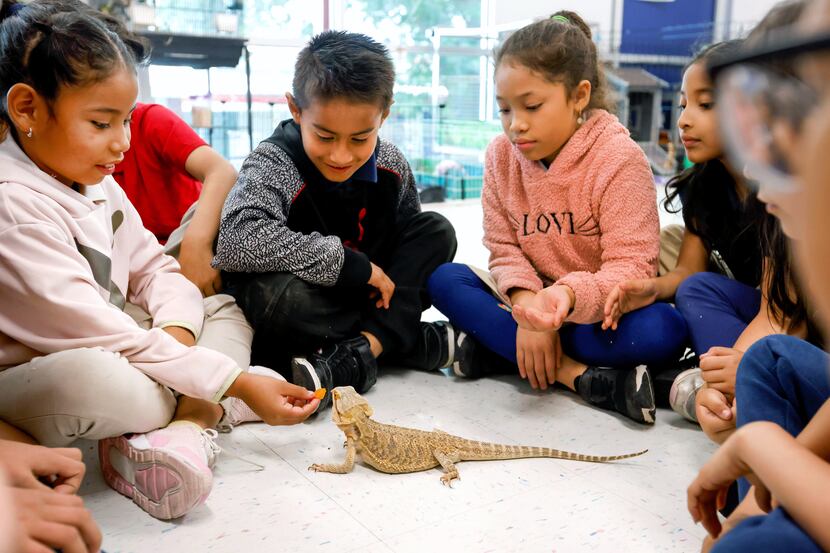A note to readers: I am taking a hiatus from my column-writing to pitch in on an important Dallas Morning News project that we expect to publish later this year. I will be back in my city columnist spot as soon as possible.
Never had I planned to touch a snake as part of my column assignment Wednesday — or, for that matter, any assignment. Nor did I believe any nonsense about the healing touch of a reptile.
What I hadn’t counted on is the potency of the magic Dallas ISD principal Erika Pasieczny creates with her Critter Room at Silberstein Elementary.
I instantly relaxed as sunglow boa Platano climbed up and down my arm, its velvet-soft touch oddly comforting.
Dr. Paz — no one tries to pronounce her full name — had let a 6-month-old snake make the principal’s case about the importance of this unique campus initiative.
Other DISD schools are home to chicken coops and vegetable gardens. Last fall, Silberstein kicked off something bigger: A hands-on classroom with more than 20 animals to help students learn to better care for their own pets.
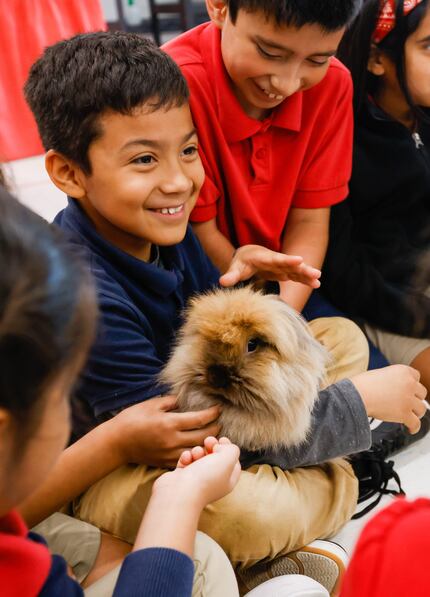
The effort is an imperfect but hopeful response to the loose dogs that roam the nearby neighborhoods of Parkdale and Urbandale, just south of I-30 east of downtown.
A lot of these dogs — some actual strays but mostly pets not properly secured by their owners — wind up on school property.
“That was not safe for kids,” Dr. Paz told me. “But I didn’t want to chase them off and have them get run over.”
An animal lover since her early years helping with her family’s goats, chickens and rabbits, Dr. Paz first tried keeping the wayward dogs in her office or a school bathroom until she could get help.
Owners often showed up after Dr. Paz posted the dogs’ photos on neighborhood Facebook pages. Other times, Dallas Animal Services took the lost pups to the city shelter.
Dr. Paz slowly realized she couldn’t save all the dogs gone astray or change the communities’ loose-pet culture overnight.
But she could educate the next generation of pet owners.
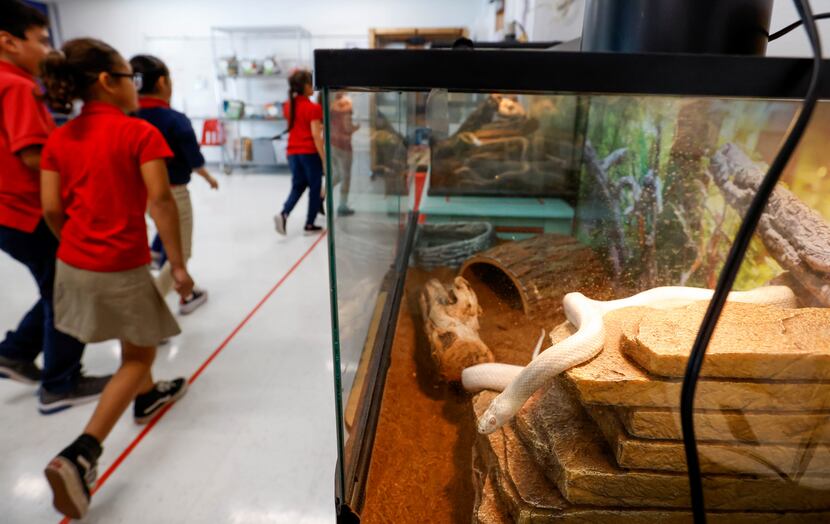
That was only half her reason for the Critter Room. Many Silberstein students face social-emotional challenges; Dr. Paz’s research and experience told her the campus pets could be a lifesaver for these kids.
“We have many students with these needs,” she said, “plus those who simply need more confidence.”
Whether a student is part of the “Critter Crew,” which feeds and cares for the animals, or a regular visitor who holds a chinchilla while practicing a “calming breath” exercise, spending time with the menagerie cultivates empathy, responsibility and knowledge about a world these kids might otherwise never see.
On this assignment with me were Sade Ajishegiri and Maya Gray, two Indiana University students whom our newsroom recently hosted and who helped with the Critter Room reporting.
Tango, a Blue Quaker parrot, greeted us in the front office with a cheery “peek-a-boo” before hopping onto his favorite mode of transportation, Dr. Paz’s shoulder.
Inside the animal care room, with its light earthy smell, are more than 20 creatures that call Silberstein home. That’s in addition to Tango, 14 chickens in the schoolyard coop and Penny, the ball python in Dr. Paz’s office.
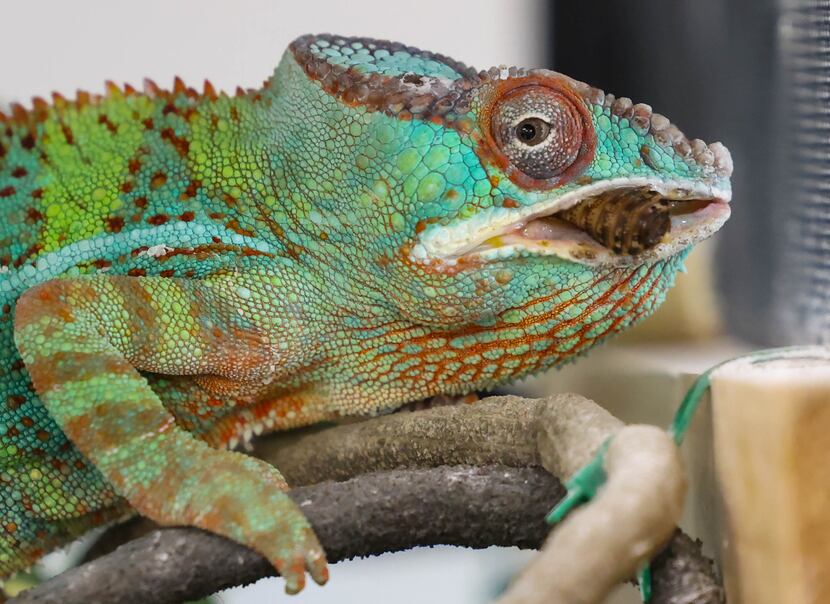
“That’s so rude, man,” Dr. Paz exclaimed to another ball python, Bruno, as she plucked an uneaten mouse carcass from his Critter Room enclosure.
“We’re teaching them to eat frozen, not live, because that’s more humane,” she said. “Bruno’s not having it.”
Alongside the individual glass cases that house Bruno and Platano is the enclosure for Snowflake, a 15-year-old white corn snake, and an aquarium with axolotls Bubbles and Jaws, water salamanders whose translucent skin is whitish pink.
On the far wall are Harley, the crested gecko, and Kiwi, the teal-striped Ambilobe panther chameleon.
My favorite was Pixie, a chinchilla with fur so soft it seemed to vanish as I stroked her. A close second was Monty, the brownish gray and white rat that stuck his nose through the cage begging for a treat.
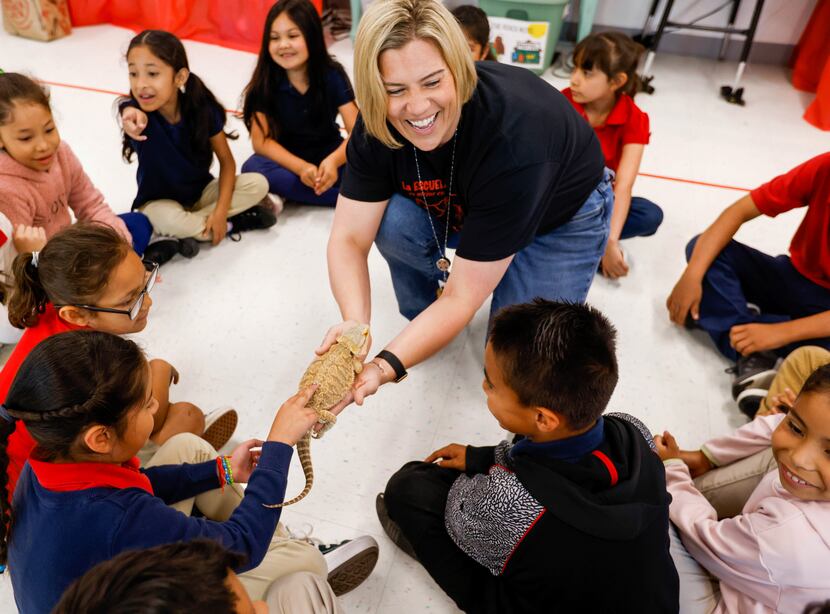
Like many of the animals in the room, Monty and cage-mate Jack are rescues. Dr. Paz’s daughter saved their lives by offering to buy them from the reptile store where they were moments away from becoming a snake’s lunch.
In the case of black-furred rabbit Lily Beth, a family donated her, along with a book created by their young children who detailed her food preferences and previous playmates.
We hadn’t made it all the way around the room when a class of second graders entered single-file, following the red tape on the floor to maintain a safe viewing distance.
They had arrived for their weekly 20-minute lesson with these furry, feathery and scaly friends.
Speaking with their principal in a mix of English and Spanish, they settled into a tight circle as Dr. Paz slowly placed “animal of the month” Larry, the bearded dragon, into their midst.
Lessons in nutrition and care for Larry and the children’s own pets began.
As she taught, Dr. Paz removed a few cockroaches and crickets from the breeding bins labeled “roach motel” and “cricket cabin.”
Larry lurched at each new treat and munched away while the kids watched, some spellbound and others giggling or disgusted.
To bearded dragons, crickets and roaches are a treat, like ice cream, Dr. Paz said. The veggies the kids later tried feeding Larry were, well, veggies.
“How many fingers do you put on Larry?” Dr. Paz asked. “Two, to be gentle,” the kids responded.
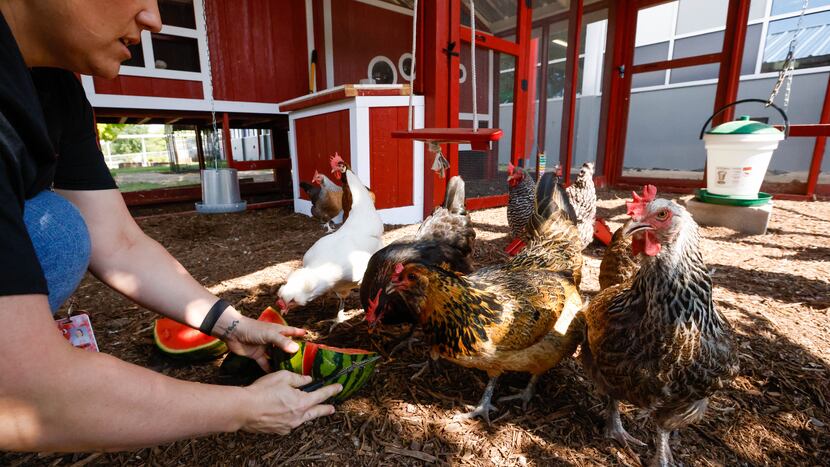
Woven through the principal’s teachings were the themes of kindness, respect and personal space.
“We want our animals to feel safe and happy, never scared. The same goes for your pets.”
“Let the animal come to you,” she said later as she placed Chewbacca, aka Chewy, the Lionhead rabbit, in the circle. “We have to treat all our pets the way we would want to be treated.”
A 19-year education veteran, Dr. Paz has given this pocket of often-ignored southeast Dallas much to celebrate since she arrived in 2020.
The school received a “B” in the 2021-22 accountability ranking; it scored the same in 2018-19, before COVID postponed campus grades for two years.
The percentage of positive responses on Silberstein’s climate surveys — completed by students, parents and teachers — has risen from 69% in spring 2021 to 94% in fall 2022.
When I asked the children how many of them have pets at home, most raised their hands.
What have they learned? “To keep them healthy and safe.” “To be calm around them.” “To be gentle.” “To give them baths.”
After the students cleaned their hands and returned to their classroom, Dr. Paz showed us another way the campus is coping with loose dogs: A just-installed oversized kennel to keep dogs safe until help or owners arrive.
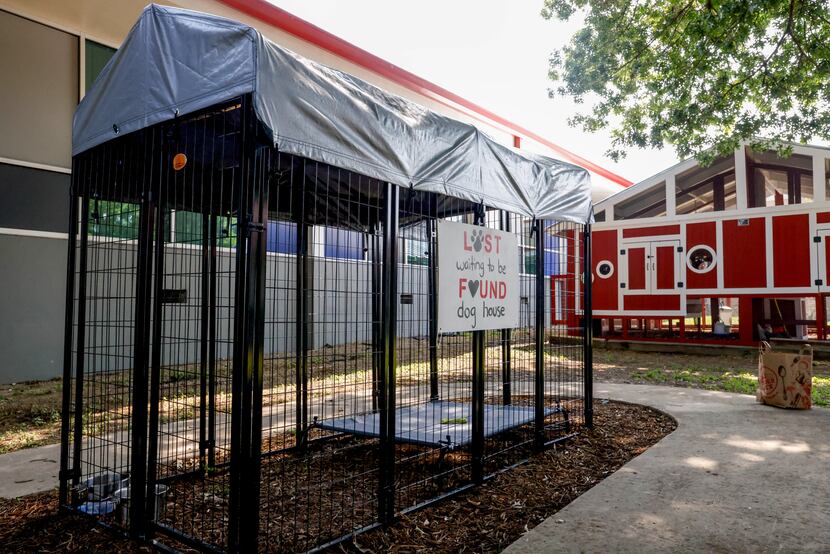
Throughout our visit, Dr. Paz repeatedly pointed out the many ways Silberstein’s teachers have supported the work, with big donations as well as their time.
The kennel sits alongside Silberstein’s latest animal initiative: A state-of-the-art chicken coop, which opened in April.
The hens in the red-and-white coop include floofy-haired Einsteina and Alberta along with queen of the roost, Chick-filet-na. Second graders help gather the eggs, which go to teachers chosen through a lottery.
Dr. Paz paid for the coop and nearby garden with a Dallas ISD “innovation engine” grant.
Silberstein, among the DISD campuses on a longer calendar this year, will end classes later this month. Several teachers and community members will care for the animals that remain on campus during the summer.

Our visit came at a tender moment for Dr. Paz, who I learned Wednesday is in her last days at Silberstein. The same goes for Tango, who is her personal pet and sure to be missed by everyone who enters the school next semester.
Employment options have forced Dr. Paz and her husband, a chaplain based in El Paso, to live apart for almost three years.
“I love this school and leaving a year after starting the animal program is devastating,” she told me. “But I love my husband more, and we need to not be strangers.”
It’s a big loss for Silberstein, as Dr. Paz moves to a new job as principal at an El Paso middle school.
I expect her new students will begin their year with a “peek-a-boo” greeting from a Blue Quaker parrot.
